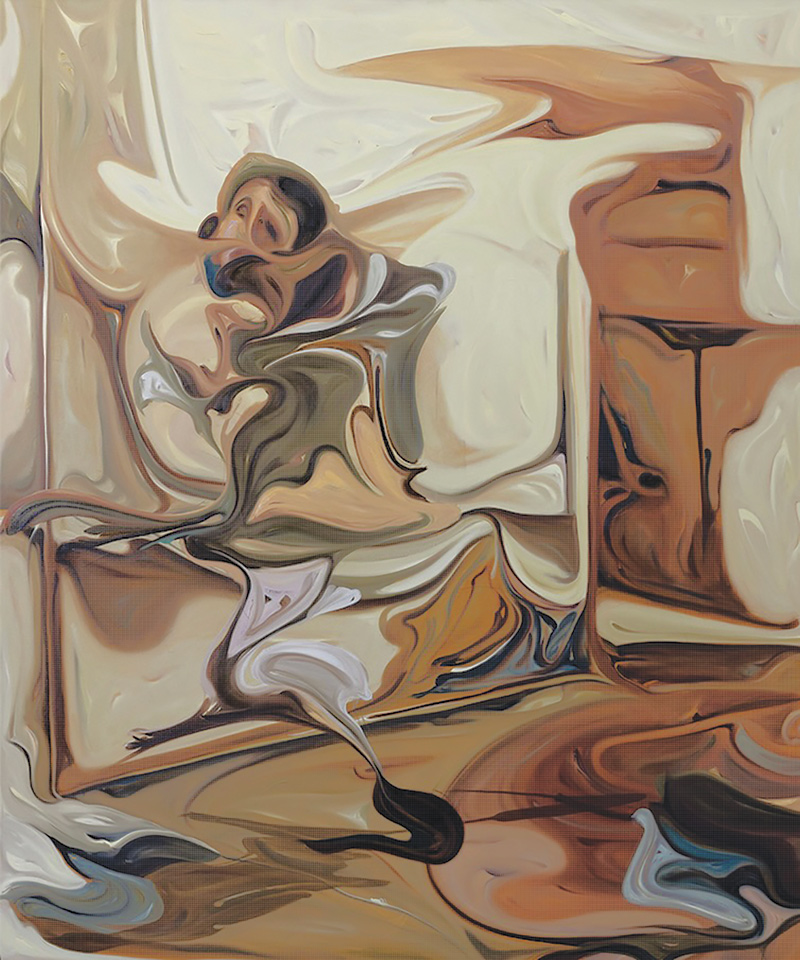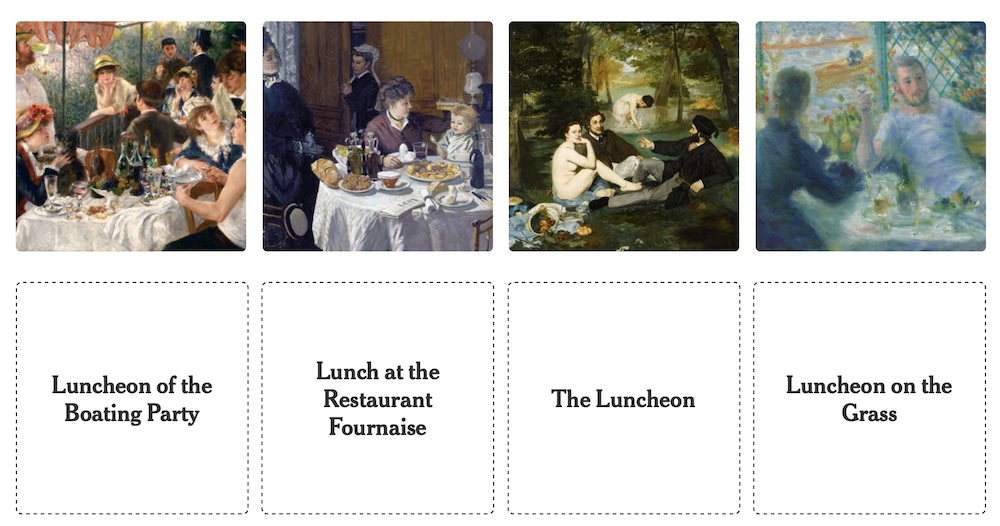Local Artists Create Immersive Environments at EXPO Chicago

By FRANCK MERCURIO
Walking through Sabina Ott’s grotto-like installation, because the mountains were so high, I ran into the artist herself as she applied finishing touches of white paint to the work’s polystyrene and spray foam walls.
“It’s not quite done yet,” she said matter-of-factly.
Ott had borrowed a security guard’s stool, using it as an improvised ladder while she touched-up the edges of a video monitor embedded into one of the installation’s walls. The Thursday afternoon crowd of art collectors and journalists had just begun to filter through EXPO Chicago’s maze of booths. Some people ventured into Ott’s installation as the artist continued to work.
“I think I hear my gallerist,” said Ott, as Jefferson Godard of Aspect/Ratio appeared from around the corner.
“Sabina, let’s take a walk and see some art!” said Godard.
But Ott was having none of it—at least not for the time being—as she worried over the details of her latest immersive environment. Her perfectionism is understandable. Because the mountains were so high provides the artist with a huge potential audience for her work. The installation is poised to greet thousands of EXPO visitors—including gallery owners, curators, and collectors—as they enter the building from Navy Pier’s outdoor promenade.
Ott’s EXPO installation is a follow-up (and smaller cousin) to an earlier piece, titled who cares for the sky?, a mammoth installation exhibited this past winter and spring at the Hyde Park Art Center [pictured above]. That particular installation put Ott on Chicago’s cultural map. Now, EXPO promises to deliver an even larger, international audience for the artist’s work.
Ott's installation is one of several by Chicago artists displayed inside EXPO—and each work presents its respective artist with the possibility of garnering attention far beyond Chicago itself.
The installation receiving the most attention—by far—on Thursday evening at Vernissage was Leonard Suryajaya’s Bunda located inside the Chicago Artists Coalition booth. Suryajaya was born in Indonesia, and his work addresses aspects of his southeast Asian heritage. Educated in the United States at Cal State and the School of the Art Institute of Chicago, the young artist is currently a resident in the BOLT program for 2015/2016—his installation proposal for EXPO was selected among his fellow residents by Yesomi Umolu, the exhibitions curator at the University of Chicago’s Logan Center for the Arts.

Like Ott, Suryajaya created an immersive environment for EXPO, inviting viewers to occupy and participate in an imagined world. But where Ott’s installation is somewhat cool and ethereal, Suryajaya’s work explodes in a riot of color, pattern, and large-format photographic images featuring the artist’s female relatives, including his mother. A hilarious, tongue-in cheek video serves as a focal point among the installation’s array of disparate elements.
Suryajaya’s installation could easily have strayed into chaotic territory, but under the expert guidance of his curator, Umolu, the artist’s ideas and intentions shine through in a clear and exhilarating way.
Other installations at EXPO explore heavier topics centered around notions of social justice—and injustice. Not far from Suryajaya’s installation, the Human Rights Watch booth presents 34,000 Pillows, an installation by the Chicago-based collaborative Díaz Lewis. In this work, Alejandro Díaz and Cara Lewis explore the federal government’s mandated “bed quota” which requires that 34,000 immigrants be housed—per day—in 250 detention facilities throughout the United States. In an effort to humanize these statistics, the couple is working with a group of volunteers to fabricate 34,000 pillows made from used clothing. The collaborative is selling each pillow for $159, the amount of tax-payer money spent per bed per day on detainees—amounting to a staggering $2 billion per year.
Díaz Lewis’ team is fabricating the pillows in a public studio located at the Chicago Cultural Center. (You can visit it through November 12.) Here, visitors can participate in the creation of pillows by either donating clothing or helping to stuff pillows. On Thursday, 150 pillows filled the Human Rights Watch booth—and more than 30 were sold to EXPO visitors that evening. Funds raised from their sale will go directly to local and national immigrants rights groups combatting the injustices of the detainment centers.

One gallery in particular stands out in terms of art that carries activist messages. Entering into Monique Meloche’s booth, visitors are greeted by Cheryl Pope’s WHEN I GET OUT, Voice of Incarcerated Youth (2015), an eight-by-six-foot carpet woven with the words “When I get out, I’m going to start by beating someone up.” This provocative piece—sized to the dimensions of a typical youth jail cell—immediately sets the tone of the booth, one that is curated more like a museum exhibition rather than a gallery showroom.
Just beyond Pope’s carpet, Ebony G. Patterson’s 17 (…when they grow up…) (2016), serves as an arresting focal point for the booth. Standing nearly six feet in height, a portrait of an anonymous African American adolescent is adorned with beads, appliques, fabric, glitter, feathered butterflies, and even a toy car. The piece speaks of the innocence of youth, while simultaneously projecting an image of a memorial altar to the dead. It’s a powerful anchor for this space featuring works by Carlos Rolon/Dzine, Joel Ross, Amy Sherald, and Nate Young—all of which are skillfully curated to create a cohesive installation.

The evening of Vernissage wrapped up with a performance piece by Cheryl Pope. Red, white, and blue balloons were dropped from the ceiling (political convention style) in front of the entrance to the exposition hall. Guests spontaneously popped the balloons, which had fallen to the floor—making noises that sounded eerily of gunfire—and released messages printed on bits of black paper. Each “message” was stamped with a quote from a prisoner overheard by the artist on a visit to Illinois’ Stateville Prison. The performance piece was both exuberant and sobering—and it accomplished what all successful works of art do: it engaged emotions and intellect, making the EXPO visitors both feel and think. It was a powerful moment in the career of this young Chicago artist.
For more information about EXPO CHICAGO visit expochicago.com
Top image: Sabina Ott, who cares for the sky, 2016, installation view at Hyde Park Art Center, Chicago






